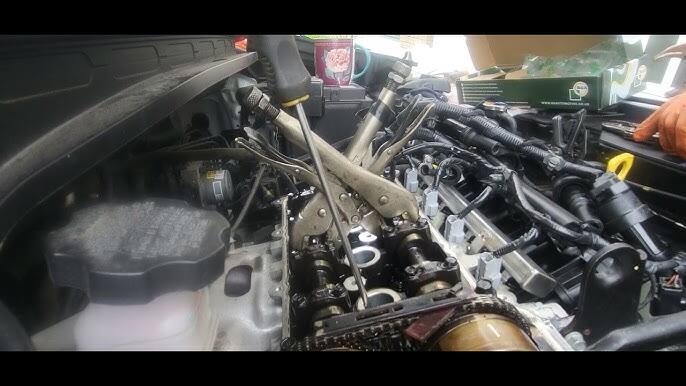How to Adjust Engine Timing Without Special Tools: A Step-by-Step Guide
Time: 2024-12-12
Engine timing is a critical aspect of automotive maintenance, ensuring that the engine’s valves open and close at the correct intervals to optimize performance and fuel efficiency. While specialized timing tools are often used for precision, there are situations where you might need to adjust engine timing without them. This guide will walk you through the process of adjusting engine timing without special tools, with a focus on common vehicles.

Understanding Engine Timing
Before diving into the adjustment process, it’s important to understand the basics of engine timing. In a four-stroke engine, there are two main timing events: intake and exhaust. The intake timing ensures that the intake valves open to allow air-fuel mixture into the combustion chamber at the right moment. The exhaust timing ensures that the exhaust valves open to release the combustion byproducts after the power stroke.
Preparing for the Adjustment
Before you begin, ensure the following:
- The engine is cold to prevent overheating.
- The vehicle is on a level surface, and the parking brake is engaged.
- The engine is at top dead center (TDC) for the cylinder you are adjusting.
- You have a socket set, a ratchet, and a feeler gauge.
Step-by-Step Guide
Step 1: Identify the Timing Marks
- Locate the Timing Marks: On most engines, there are timing marks on the engine block and the crankshaft pulley or camshaft sprocket. These marks should align when the engine is at TDC for the cylinder you are adjusting.
Step 2: Adjust the Distributor (If Applicable)
-
For Distributor-Driven Engines:
- Rotate the distributor until the timing marks align.
- If the engine has a vacuum or mechanical advance, make sure it is in the correct position before finalizing the timing.
Step 3: Adjust the Camshaft (If Necessary)
-
For Camshaft-Driven Engines:
- If the engine has a camshaft that needs adjustment, you may need to loosen the camshaft bolt or lock nut.
- Rotate the camshaft until the timing marks align.
- Tighten the bolt or lock nut to secure the camshaft in place.
Step 4: Check the Timing
- Use a Feeler Gauge: Place a feeler gauge between the timing marks to check the timing. The recommended gap varies depending on the engine, so consult the vehicle’s service manual for the correct specification.
- Adjust as Needed: If the timing is off, gently rotate the engine in the correct direction to adjust the timing until the feeler gauge indicates the correct gap.
Step 5: Secure the Engine
- Secure the Timing Cover: Once the timing is correct, secure the timing cover and any other components you had to remove or loosen during the adjustment.
Step 6: Test the Engine
- Start the Engine: After the adjustment, start the engine and let it idle for a few minutes.
- Check for Leaks: Look for any oil or coolant leaks that may have occurred during the adjustment process.
Safety and Precautions
- Do Not Over-Tighten: When securing bolts or nuts, do not over-tighten as this can damage the threads or the component itself.
- Consult the Manual: Always refer to the vehicle’s service manual for specific instructions and specifications.
- Professional Help: If you are unsure about the process or if the engine is not running smoothly after the adjustment, seek professional assistance.
Conclusion
Adjusting engine timing without special tools is a task that requires patience and attention to detail. By following these steps and taking the necessary precautions, you can ensure that your engine is properly timed for optimal performance. For a range of tools and accessories that can aid in engine maintenance, visit www.htlhongtu.com for a selection of professional-grade products designed to make your automotive repair tasks easier and safer.

